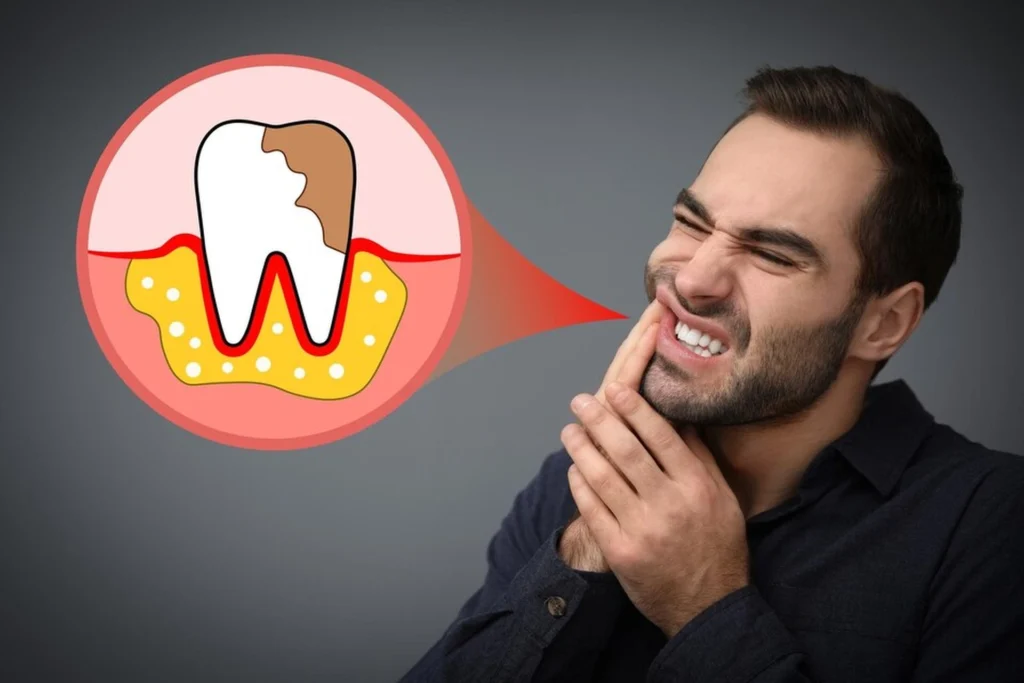Top 5 Hidden Risks of Tooth Decay & How to Protect Your Smile

Tooth decay is not just a small hole in your tooth. It starts in your mouth when harmful bacteria feed on sugars and starches. These germs make acid that wears away your enamel over time. When enamel goes away decay moves to dentin a softer layer. At this stage it becomes hard to prevent the damage. The risks of tooth decay frequently go unnoticed.
A shining spot on your teeth can show decay. It gets darker and holes form over time. It gets to the inner pulp home to nerves and blood vessels if you dont treat it. Infections pain and tooth loss happen because of this.
Silent Symptoms That Often Go Unnoticed
The risks of tooth decay go in its silent progress. Many people wait until it is too late to realize they have cavities. A lot of the time tooth loss happens without any apparent signs. You would not feel pain until a lot of damage has been done. Here are some early danger signs:
- Sensitivity to hot or cold
- Discoloration or tiny white spots on teeth
- Mild discomfort while chewing
- Bad breath that does not go away
Many people do not pay attention to these signs. They wait until it hurts badly when the decay might have gone very deep into the tooth. Getting regular oral checkups can help find decay early. Not caring for it can lead to root canals extractions or even worse.
How Tooth Decay Affects Your Health
The risks of tooth decay continue to grow at your teeth. Bacteria in your mouth can circulate to your heart lungs and bloodstream making you more likely to get seriously sick.
Heart disease is linked to lousy mouth health. Harmful germs can get into blood vessels through infected gums. This could make your heart swell up. It raises your risk of having a stroke or heart attack.
Dental cavities may also occur in diabetics. Getting infections from decay can make it harder to keep blood sugar levels in check. There are now more problems because of this.
Bacteria from cavities can get into the lungs making respiratory illnesses more likely especially in older people.
Mental health gets worse. People whose cavities have not been fixed often feel bad about their smile. This makes people less confident and more stressed and hurts relationships.
The risks of tooth decay go beyond dental pain. They put your head body and general health at risk.
The Real Cost Of Neglecting Dental Care
Not getting dental care can cost you much money and hurt your feelings. The risks of tooth decay include expensive treatments and poor quality of life.
Small cavities may be easily fixed with a filling. You may need an extraction root canal or crown if you do not take care of them. These operations are more expensive and time consuming.
You have to spend significantly more when you lose teeth. The cost of implants or bridges to replace a lost tooth that needs regular care could reach thousands of dollars.
If you miss your teeth it modifies how you eat and speak. You might not eat your favorite foods or be brave in public. This makes everyday life less fun.
The risks of tooth decay also affect work and school. When people have oral pain they often miss important days. Theres more to it than just health. It has to do with how you live.
Not taking care of minor problems now will cause bigger ones later. Getting rid of rot quickly can save you money pain and your smile.
Proven Strategies To Prevent Tooth Decay
Good habits are the first step to stopping decay. Daily care and wise choices can avoid the risks of tooth decay.
Use fluoride toothpaste to brush your teeth two times a day. Fluoride supports teeth and helps fix small issues. Do not forget to floss. Flosses get rid of food stuck between teeth that toothbrushes ca not reach.
Tooth loss is easier to avoid than to treat. Start by making good habits every day:
- Brush your teeth two times a day for two minutes
- For stronger enamel utilize fluoride toothpaste.
- Floss daily to clean between teeth
- Avoid sugary drinks and snacks
Drink a lot of water during the day. It helps get rid of germs and bits of food. Crunchy fresh fruits and veggies will also help clean your teeth. Plus they make you salivate which keeps your teeth clean.
Go to the doctor twice a year. Cleanings remove dirt and checkups find early signs of decay. For extra safety your dentist can also use fluoride treatments or patches. Understanding and following these steps significantly reduces the risks of tooth decay.
How To Choose The Right Safety Tools And Items
Not all medical items are the same. Using the wrong tools can increase the risks of tooth decay. Pick fluoride toothpaste that oral groups have approved. Fluoride enhances enamel and prevents tooth decay in the first place.
Buy a toothbrush with gentle bristles. To stop plaque with an electric toothbrush which is more user friendly than a conventional toothbrush. They also help people who have trouble moving or have bad form.
Try to find a mouthwash with germ killing ingredients. These kill germs that cause things to rot. Rinses with alcohol can dry out your mouth so stay away from them. Use floss that fits between your teeth well. Some people like water flossers better and they work just as well.
Read the labels on the food. Avoid toothpaste or rinses that have a lot of sugar or unnecessary ingredients. Find out what your doctor thinks based on your needs. Every day you can defend yourself against the risks of dental decay with proper tools.
FAQs
1. What Is Tooth Decays First Symptom?
White spots or a little pain are often the first signs.
2. Can Tooth Decay Heal On Its Own?
Not at all. Damage to enamel can only be stopped or fixed very early on.
3. Does Sugar free Soda Still Cause Tooth Decay?
Yes. Still the acid in soda can hurt tooth enamel.



